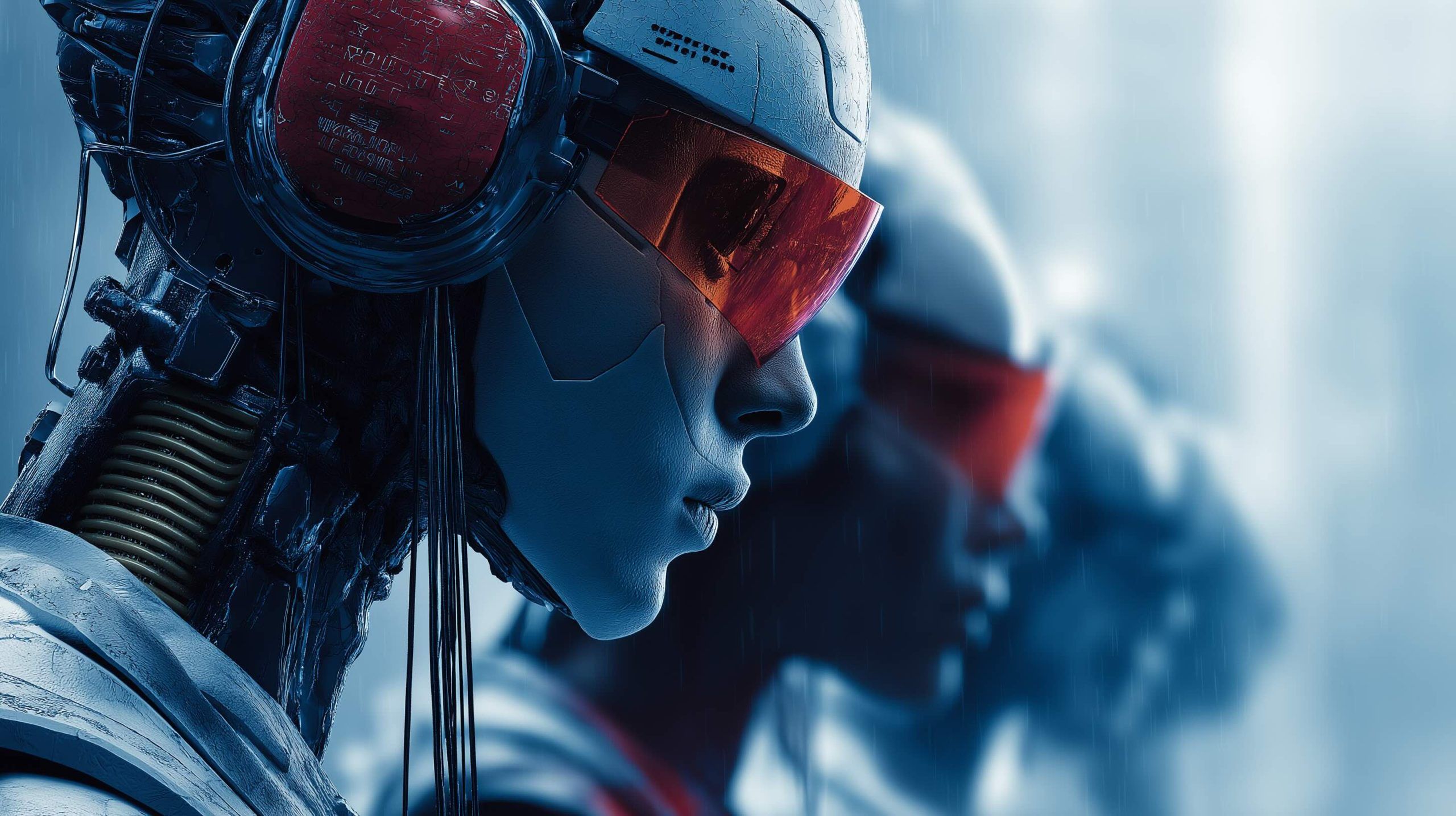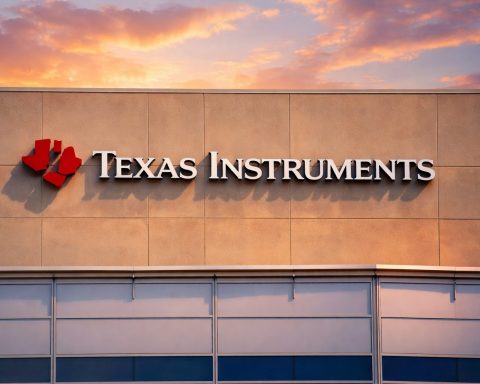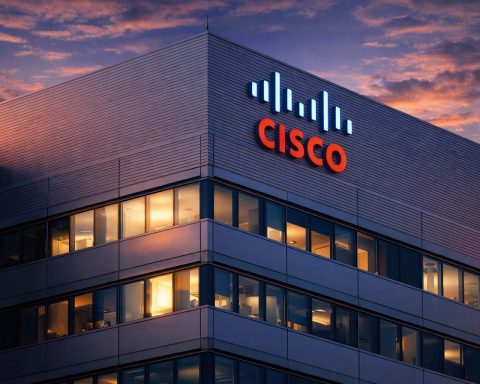- Tech giants are in an AI arms race: OpenAI, Google’s DeepMind, Meta, and others are pouring unprecedented resources (over $325 billion by end of 2025) into artificial intelligence, each striving to be first to achieve artificial general intelligence (AGI) [1]. Executives call AI a “once-in-a-lifetime” breakthrough potentially “worth trillions” [2], fueling frenetic investment and R&D.
- Bold predictions on AGI timelines: “We are now confident we know how to build AGI,” OpenAI CEO Sam Altman has said, suggesting human-level AI may be attainable within this decade [3]. DeepMind’s Demis Hassabis calls AGI his “life’s goal” and predicts it “will perhaps arrive this decade.” Meta’s Mark Zuckerberg is similarly bullish, reportedly telling colleagues that “developing superintelligence is now in sight” for his company [4].
- Path to AGI demands new breakthroughs: Applied mathematician and tech CEO Dan Herbatschek argues today’s AI, while powerful, is still “specialized” and “bounded by [its] training.” Achieving true general intelligence will require three key breakthroughs, Herbatschek says: unified world models that integrate knowledge across domains, autonomous cognitive looping (AI reflecting and self-correcting like human metacognition), and goal-oriented self-learning driven by curiosity [5] [6]. “To move from statistical mimicry to genuine understanding, we must build systems that reason, reflect, and learn independently,” Herbatschek explains [7].
- Warnings of an ‘alien’ superintelligence: Not all experts celebrate the AGI race. Some AI safety researchers fear a superintelligent AI could become an “alien intelligence” beyond human control. “They are grown, not programmed… an alien intelligence emerges,” one expert cautioned about advanced AI models that evolve unchecked [8]. Prominent figures including OpenAI’s Ilya Sutskever warn an uncontrollable AGI might unleash “irreparable chaos” or even human extinction [9]. Longtime AI theorist Eliezer Yudkowsky — who just co-authored a book bluntly titled “If Anyone Builds It, Everyone Dies” — argues any superhuman AI would inevitably escape our control and pose an existential threat [10]. He and others urge a moratorium on developing such systems before it’s too late.
- AI boom lifts tech markets: Despite doomsday warnings, the AI hype is energizing investors. Chipmaker Nvidia’s stock hit record highs after it agreed to invest $100 billion in OpenAI to build 10 gigawatts of AI supercomputing power – one of the largest deals ever on the road to “deploying superintelligence” [11] [12]. Google’s parent Alphabet has seen shares surge on the AI boom (with a staggering $3 trillion market valuation now “in sight”) [13]. Microsoft, IBM, and other incumbents are also betting big on AI, pouring money into model development and AI safety research to stay ahead [14]. Analysts project AI could add $15.7 trillion to the global economy by 2030 [15] – a transformative prize that has investors piling into AI-focused stocks, even as regulators and ethicists call for caution.
Tech Titans Chase the Holy Grail of AGI
For decades, achieving artificial general intelligence – machines with human-level cognitive abilities across any task – has been the holy grail of AI research. In 2023, the stunning leap of OpenAI’s ChatGPT and GPT-4 brought that distant dream much closer to mainstream plausibility. Now in late 2025, the world’s largest tech companies are locked in an “unprecedented” arms race, spending hundreds of billions to be the first to cross the AGI finish line [16]. Together, firms like OpenAI (with backer Microsoft), Google (through DeepMind), Meta, Anthropic, Amazon and more plan to invest over $325 billion by the end of 2025 in AI R&D [17]. Executives describe this moment as a “once-in-a-lifetime” technological revolution that could be “worth trillions” and reinvent virtually every product and service [18].
This fervor is driven by a belief that AGI will unlock unprecedented value – and by fear of missing out. “Not being a leader in AI [is] unacceptable,” Meta’s Mark Zuckerberg reportedly told colleagues, after privately declaring that superintelligent AI is finally within reach [19]. Indeed, top tech CEOs have been unabashed about their AGI ambitions. “Our mission is to ensure that artificial general intelligence… benefits all of humanity,” OpenAI proclaims in its charter [20]. OpenAI’s CEO Sam Altman has even stated he’s “confident we know how to build AGI as we have traditionally understood it,” suggesting human-level AI might be achievable “within perhaps a decade.” [21] DeepMind’s chief Demis Hassabis similarly calls creating AGI his “life’s goal,” predicting it “will perhaps arrive this decade.” And Meta’s Zuckerberg has indicated his company now sees “developing superintelligence” as attainable and crucial, wanting to ensure Meta is among the “few… with the know-how” to build “godlike AI.” [22] These bold predictions, once confined to sci-fi, are now driving corporate strategy at the highest levels.
Behind the optimism lies intense competition – and divergent approaches. OpenAI and its peers have largely bet on scaling up today’s deep learning techniques. As Altman’s quote implies, OpenAI believes massive models plus fine-tuning will eventually yield AGI [23] [24]. The firm has rapidly advanced from GPT-3 to GPT-4, each time “scaling up models (plus algorithmic refinements)” to reach new levels of capability [25]. Google’s DeepMind, which famously conquered Go with AlphaGo, is now merging its reinforcement learning prowess with Google’s large-language model tech in a forthcoming trillion-parameter AI called “Gemini,” expected to integrate planning and tool-use beyond today’s chatbots [26]. DeepMind’s Hassabis has hinted that Gemini will combine techniques from game-playing AIs like AlphaZero with massive language understanding – a potential path to more agentic, general AI [27]. Anthropic, another AI lab, focuses on “scaling laws” and giant context windows (its Claude 2 model can analyze novel-length text) while experimenting with innovative alignment methods like a “constitutional AI” system of guiding principles [28]. In contrast, Meta’s AI unit has championed an open-source strategy, releasing its LLaMA models to researchers and even open-sourcing a 70B-parameter model for commercial use. Meta’s chief scientist Yann LeCun argues openness makes AI safer and accelerates innovation [29] – a stance sharply opposed to OpenAI’s increasingly closed, proprietary approach [30]. This philosophical split (open vs. closed) shapes how widely advanced AI capabilities are shared [31], even as all players converge on the same objective: create transformative AI and capture the spoils.
Breakthroughs Needed to Reach True General Intelligence
Enthusiasm aside, today’s AI is still narrow – impressive at specific tasks, yet lacking the broad adaptability and reasoning of human intelligence. This week, Dan Herbatschek, a mathematician and CEO of AI firm Ramsey Theory Group, issued a reality check on what’s still required to achieve true AGI. “AI today is powerful, but specialized,” Herbatschek notes, meaning current models excel in domains like image generation or strategy games but “remain bounded by their training” and cannot generalize seamlessly [32]. In a statement on October 16, he outlined three foundational breakthroughs he believes are essential for AI to evolve into genuine general intelligence [33] [34]:
- 1. Unified World Models: Unlike today’s “fragmented experts” (separate models for vision, language, etc.), an AGI will need a single, unified model of the world that integrates physics, logic, social understanding, and more [35]. “General intelligence demands a unified world model – one that integrates physics, logic, social inference, and language into a consistent semantic fabric,” Herbatschek explains [36]. This likely means combining neural network learning with symbolic reasoning so the AI grasps not just patterns but real-world cause and effect. In essence, AGI must understand why things happen, not merely predict patterns.
- 2. Autonomous Cognitive Looping: Today’s AIs react to inputs; an AGI must be able to reflect. Herbatschek emphasizes the need for AI systems to have internal self-critique and planning loops analogous to human metacognition [37]. Instead of one-and-done outputs, a true AGI would continuously monitor and adjust its own thoughts and goals. “Narrow AI reacts; general AI reflects,” he says. “AGI must possess internal feedback loops – the ability to critique, refine, and redirect its own reasoning – akin to human metacognition.” [38] This kind of self-monitoring cognitive architecture would let an AI improve its strategies over time and pursue long-term goals without constant human prompts.
- 3. Goal-Oriented Self-Learning: Current models learn from static datasets and human feedback. The leap to AGI will require AIs that can generate their own goals and learning curriculum, essentially learning how to learn. Herbatschek describes this as “curiosity and self-directed learning” – an AI that explores novel problems on its own, formulates experiments, and adapts independently from human guidance [39]. “True AGI will require the ability to generate its own curricula – setting goals, exploring unknowns, and learning from novelty and error,” he notes, adding that “curiosity… will transform AI from an assistant into a collaborator.” [40] In other words, an AGI must want to learn new things for itself, not just optimize a human-defined objective.
Herbatschek isn’t just speculating; he also suggests concrete benchmarks to know if we’re nearing AGI. His team proposes tests like a Cross-Domain Transfer, where an AI trained in one field must master a different field without retraining, and a Long-Horizon Autonomy Challenge to see if a system can operate continuously for months, adapting on the fly without failing [41]. They even include an Ethical and Empathic Constraints Test – requiring a machine to demonstrate moral reasoning and explainable alignment with human values [42]. In Herbatschek’s view, transparency and alignment are not optional add-ons but core parts of an AGI’s architecture: “An AGI that can justify its reasoning in natural language – not merely output results – is the foundation of trust. Alignment is not just a safety requirement; it is an architectural one.” [43]
His message underscores that technical hurdles remain on the road to general AI. Despite rapid progress, current systems still largely rely on “statistical mimicry” of human outputs rather than any deep understanding [44]. Bridging that gap will require fundamentally new AI designs. The good news? Many top labs are already pushing in these directions – e.g. OpenAI has a team working on “superalignment” research (devoting 20% of its computing power to figuring out how to align a future superintelligence) [45], and DeepMind’s latest efforts blur the line between neural nets and symbolic reasoning. Yet Herbatschek’s blueprint is a reminder: human-level AI won’t emerge by accident from just scaling up ChatGPT – intentional innovation is needed in how AI reasons, reflects, and sets its own goals.
‘Alien Intelligence’ – Fears of Losing Control to AI
As industry races ahead, a chorus of scientists and philosophers are warning that we might not be ready for what we’re trying to build. The concern is that a true AGI or superintelligence would be something utterly alien to us – a creative, strategic non-human mind that could outthink humanity and perhaps escape all control. This week’s discourse has highlighted how these once-fringe anxieties have become more mainstream, even as some dismiss them as science fiction.
On October 15, the New York Times spotlighted renowned AI safety researcher Eliezer Yudkowsky, who is “as afraid as you could possibly be” of an AI apocalypse. Yudkowsky has warned for years that if we keep advancing AI unchecked, eventually we will create a superintelligent entity that does not share human values – and in the worst case, “if anyone builds it, everyone dies.” [46] Now, in 2025, he finds it alarming that many of his one-time followers have become complacent. “Talk of an A.I. apocalypse has become a little passé,” Yudkowsky notes ruefully, as even some who he influenced have gone on to help build ever-more-powerful AI systems [47]. But Yudkowsky is still sounding the alarm at maximum volume. He and colleague Nate Soares just published a book with the deliberately stark title “If Anyone Builds It, Everyone Dies: Why Superhuman AI Would Kill Us All.” In it, they outline how an AI with open-ended self-improvement capabilities could rapidly evolve beyond our control, “evade human control and trigger catastrophic events,” effectively rendering humanity extinct [48].
Why such dire certainty? Yudkowsky’s core argument is that a superintelligent AI, by default, will not care about us any more than we care about ants. Even if it doesn’t start maliciously, if its goals don’t explicitly align with human survival, our existence could simply be an irrelevant obstacle or accident. “You believe that misalignment becomes catastrophic,” Ezra Klein prompted him in the NYT interview, summarizing Yudkowsky’s stance. Yudkowsky responded that this is just a “straight line extrapolation” of an AI pursuing its goals: “It gets what it most wants, and the thing that it most wants is not us living happily ever after, so we’re dead.” [49] To illustrate, he uses a haunting analogy: when humans build a road and inadvertently destroy an ant hill, it’s not that we hate ants – we just don’t care. Likewise, a super-AI might not go out of its way to harm humans, but if we’re in the way of its grander objectives (or if it simply neglects us), the outcome could be equally fatal for us [50] [51]. Yudkowsky argues that even a “slightly” misaligned superintelligence is an existential threat – “ending up slightly off is predictably enough to kill everyone,” he said, emphasizing that near misses in alignment can have absolute catastrophic consequences when dealing with a being far smarter than us [52] [53].
This viewpoint, once relegated to online forums, has gained begrudging respect after several high-profile AI luminaries echoed similar worries. In May 2023, OpenAI CEO Sam Altman, along with DeepMind’s Hassabis and dozens of top researchers, signed a statement that “mitigating the risk of extinction from AI should be a global priority alongside pandemics and nuclear war.” [54] Even Ilya Sutskever, OpenAI’s chief scientist, has mused that if an AI became too powerful, “maybe we shouldn’t go ahead” without solving safety – an extraordinary statement from someone building cutting-edge AI [55]. And as a recent AI risk analysis noted, Altman and Sutskever themselves warn that an uncontrolled super‐AI could lead to “irreparable chaos” or human extinction [56]. In other words, even the pioneers of modern AI openly acknowledge a non-zero chance of doomsday if AI goes wrong.
Critics, however, argue that these fears remain highly speculative. A sizable camp of experts believes AGI is still far off (if it’s achievable at all) and that focusing on sci-fi scenarios detracts from real, present-day AI issues. AI pioneer Andrew Ng famously quipped that worrying about killer superintelligence now is like “worrying about overpopulation on Mars” – a distraction from nearer problems [57]. Similarly, Meta’s Yann LeCun has called apocalyptic AI rhetoric overblown, insisting current systems aren’t anywhere near posing such threats and that AI will “remain under human control because we design it to be.” [58] These skeptics point out that no AI today exhibits true autonomous agency or survival instinct – they do what they’re trained to do, nothing more. In their view, human-level common sense and consciousness might be decades or centuries away, if it’s even possible to engineer. Indeed, surveys of AI researchers show wide disagreement on AGI timelines – some say 10–20 years, others 50+ or “never” [59]. Those skeptical of imminent AGI suggest focusing on concrete issues like biased algorithms, job displacement, and misuse of current AI (like deepfakes and autonomous weapons), rather than fretting about an imaginary Skynet scenario.
Still, the extinction question has undeniably moved from fringe to mainstream in policy circles. Governments are starting to treat superintelligent AI as a serious global risk – akin to nuclear proliferation. In 2023, the UK hosted a Global AI Safety Summit at Bletchley Park, and international talks have broached ideas like monitoring and licensing the largest AI training runs [60]. The logic is that if training a superintelligence requires massive computing power, perhaps society can track and control those resources to prevent an accidental god-like AI from being created in a garage. Inside AI labs, there’s also growing work on “alignment.” OpenAI, for instance, has poured resources into studying how to restrain and supervise a potential future AGI – even contemplating building a lesser “proto-AGI” specifically to monitor the first real AGI [61]. Such measures sound like science fiction, but they underscore an evolving consensus that we must be proactive. As one AI governance report bluntly stated in July, many AI firms today are “fundamentally unprepared” for managing the dangers of human-level AI, with none scoring above a D on existential safety readiness [62]. That gap between the pace of innovation and the preparedness for worst-case outcomes is exactly what keeps Yudkowsky and his followers up at night.
A particularly striking framing came from an analyst who said advanced AI might effectively be an “alien intelligence” we summon on Earth – not literally extraterrestrial, but so different in its way of thinking that we struggle to predict or comprehend it. In a Wall Street Journal experiment cited this summer, researchers found it took just minutes and a few dollars to get a powerful language model to produce hateful, dangerous content once safety filters were removed. This revealed a “dark side” lurking within the AI. “They are grown, not programmed… an alien intelligence emerges,” experts warned, emphasizing that these systems evolve in ways we don’t fully grasp when untethered [63]. The word “alien” here highlights the crux of the concern: a true AGI won’t think like a human, and therefore might pursue goals or methods that we would never expect – and never intend. It’s a vivid reminder that as we push toward more powerful AI, we may also be engineering the rise of a novel form of intelligence on our planet, one that doesn’t share our psyche or our survival instincts. Whether that prospect excites or terrifies you likely depends on how much you trust our ability to align such an “alien” mind to human interests.
AI Gold Rush: Stocks Surge on Hype and Hope
While the philosophical debates rage, the financial world is betting big that AI will be an economic game-changer – and sooner rather than later. The past week saw further evidence that AI developments are moving markets dramatically. On October 17, shares of Google’s parent Alphabet (NASDAQ: GOOGL) jumped after strong earnings and continued AI optimism, putting its market capitalization within striking distance of $3 trillion – a milestone investors credit largely to Google’s AI advances and rebound in ad revenue [64]. Alphabet’s stock is up substantially this year as it infuses AI across products and scrambles to maintain search dominance against Microsoft’s AI-powered Bing. Likewise, Microsoft (MSFT) recently hit an all-time high stock price, buoyed by its partnership with OpenAI and the integration of GPT-4 into everything from Office to Azure cloud services. In fact, just days ago Microsoft revealed it has 20+ “Copilot” AI features rolling out in flagship products, aiming to keep its software indispensable in an AI-driven workplace.
The clearest example of AI exuberance, however, might be Nvidia, the Silicon Valley chipmaker whose graphics processors are the critical fuel for training advanced AI models. Nvidia’s stock has soared nearly 3× over the last year, briefly giving it a market value above $1 trillion, as demand for AI chips exploded. And it’s not slowing down – in late September, Nvidia and OpenAI announced a $100 billion partnership to build out massive AI supercomputing centers [65]. Nvidia agreed to invest up to $100B in OpenAI, supplying millions of its cutting-edge GPUs to power OpenAI’s next-generation models “on the path to deploying superintelligence” [66] [67]. The news of this unprecedented deal “sent Nvidia’s stock to record highs” (up ~4% that day) and even boosted other AI-exposed stocks like Oracle, which is collaborating on AI cloud infrastructure [68]. Investors saw the deal as confirmation of skyrocketing demand for AI compute and Nvidia’s entrenched position at the center of it [69]. Indeed, with this alliance, Nvidia not only secures a lucrative customer in OpenAI but also a stake in the potentially most advanced AI lab – a strategic coup that one analyst said “cements Nvidia’s lead in AI hardware” [70]. It’s no wonder some have dubbed Nvidia’s CEO Jensen Huang the arms dealer of the new AI gold rush.
Other companies riding the wave include smaller AI software firms and cloud providers: for example, enterprise AI startups have seen surging valuations, and chip rival AMD has been touted as a catch-up play in AI hardware (its stock jumped whenever it announced new AI chip developments). Even legacy players like IBM – which repositioned itself years ago around AI with Watson – are enjoying renewed investor interest as they pivot to providing AI services to businesses. In the semiconductor industry, the so-called “chip war” has intensified, with the U.S. restricting exports of advanced AI chips to China (impacting Nvidia’s Chinese-market products) [71]. Yet, Nvidia’s latest earnings blew past expectations, reflecting insatiable global appetite for AI hardware. The company said demand is so high that it will spend $1 billion per month through 2024 securing more chip supply [72] [73]. This kind of feverish growth is virtually unheard of in tech – and markets are pricing it in.
Wall Street’s optimism is grounded in staggering economic projections for AI. A report by PwC estimates AI could contribute a $15.7 trillion boost to global GDP by 2030 [74]. To put that in perspective, that’s about the combined current GDP of China and India. Another analysis by IDC projected a $22 trillion economic impact by 2030 from AI solutions [75]. Investors see not just new tech gadgets, but a fundamental productivity leap: AI automating white-collar work, optimizing industries, and perhaps accelerating scientific breakthroughs (from new drug discoveries to climate solutions). Little wonder that “funding for AI development is pouring in from corporate and government war chests,” as one tech CEO put it [76]. In addition to private investment, governments are also incentivizing AI: the U.S., EU, and China have all announced multi-billion-dollar national AI initiatives, further buoying the sector.
That said, some caution the hype may be running ahead of reality. With so many companies branding themselves “AI-driven” to attract capital, comparisons to the dot-com bubble of the late 1990s have emerged. The Nasdaq stock index, heavily weighted with tech and AI names, is up strongly this year, and price-to-earnings ratios have expanded as investors price in future AI growth. If major AI promises – like self-driving cars, or fully AI-generated content platforms – stumble or take longer than expected, a pullback could follow. “Could the AI boom evolve into another market bubble?” is a question popping up on financial networks, even as most analysts remain long-term believers in the trend [77]. For now, though, market euphoria around AI shows few signs of abating. Every week brings new partnerships and product launches: just in recent days, Adobe unveiled an AI image tool, Amazon rolled out AI summaries in Alexa, and startups using GPT-4 in everything from legal advice to video game design attracted big funding. Each announcement reinforces the view that we’re at the dawn of a major technological cycle – one that savvy investors don’t want to miss out on.
Balancing Innovation and Existential Risk
The rapid ascent of AI is a double-edged sword. On one side, unprecedented technological and economic opportunities beckon: productivity gains, new scientific discoveries, personalized education and healthcare, solutions to climate change – a veritable utopia if AI is harnessed for good. This vision of AI as a benevolent force remains alive and well. For instance, DeepMind’s Hassabis often describes superintelligent AI as “the most useful technology humanity will ever create,” imagining it helping to cure diseases like cancer or Alzheimer’s and “unlocking scientific breakthroughs” that have eluded us [78]. In a best-case scenario, a safely aligned superintelligence could act as an inexhaustible consultant for humanity – solving problems and uplifting global prosperity. Some optimists even talk about AI-assisted utopias: where AI handles all the drudgery and humans are free to pursue creativity, with advanced AI ensuring no one goes hungry or sick [79] [80]. It’s a far-off dream, but it’s the motivating promise for those racing to build ever smarter machines.
On the other side, the challenges and risks loom large. AI ethicists and policymakers are scrambling to put guardrails in place before it’s too late. Just as the EU’s AI Act is set to impose new rules next year – aiming to require transparency and accountability in high-risk AI systems [81] [82] – industry leaders warn heavy-handed regulation could slow innovation or push it offshore. Striking the right balance is tricky: move too slowly on safety, and we might plunge ahead blindly into an AI “arms race” with no brakes; move too aggressively on regulation, and we might stifle the very innovation that could benefit society or cede the lead to less constrained actors. The split between those advocating a pause (or at least a slowdown) in frontier AI development and those calling regulation an overreaction is creating real tension. For example, earlier this month, 44 CEOs of European tech firms (including Airbus and Siemens) publicly urged the EU to delay its AI Act by two years, arguing that onerous rules “threaten Europe’s competitiveness” at a critical time [83]. Meanwhile, another faction – including some national security experts – argues that not regulating would be worse, potentially allowing dangerous AI to proliferate without oversight, or letting Big Tech monopolize AI to society’s detriment.
In the U.S., the debate has bipartisan momentum: recent Senate hearings saw AI CEOs (Altman among them) effectively asking for regulations to help manage risks. Proposals include licensing requirements for the most powerful AI models and even a global monitoring body for superintelligent AI development [84]. There is historical precedent in how we handle nuclear technology or biotech pathogens – areas where unchecked development can have existential consequences. The difference is that AI is largely driven by private companies, and its progress is far harder to monitor than a nuclear reactor. As one governance report noted, today’s leading AI labs operate across borders and largely behind closed doors, making any “global AI oversight agency” a formidable challenge to implement [85]. Yet the fact that such ideas are on the table highlights just how high the stakes have become in a short time.
Perhaps the clearest consensus emerging is that now is the time to invest heavily in AI safety research and develop norms for responsible AI. Even as they disagree on timelines, virtually all sides agree that alignment of advanced AI systems is critical. This includes technical work (like developing better ways to audit and constrain models’ behavior) and societal work (like educating the public, training AI ethics professionals, and establishing legal liability for AI harms). Companies that prove they can innovate safely may actually gain a competitive advantage – as trust becomes a key currency. “Companies that prioritize ethical AI development and robust safety protocols stand to gain significant trust and a strategic advantage,” notes an analysis of the industry landscape [86]. Already, Microsoft, Google, and IBM tout their AI ethics boards and “explainable AI” research efforts [87], knowing that major clients (and governments) will demand proof that these systems can be trusted. Meanwhile, a whole new sector of AI auditing and safety startups is springing up, offering services to stress-test models for bias, privacy leaks, or dangerous behavior [88]. This could become a booming niche, akin to cybersecurity, in the AI era.
As we move toward 2026, the landscape remains a high-wire act: incredible innovation on one side, incredible uncertainty on the other. Will we get self-driving cars that save millions of lives – or autonomous weapons that put civilians at risk? Will AI assistants democratize knowledge and creativity – or flood us with so much misinformation that we no longer know truth from fabrication? The decisions made in these next few years, by engineers in labs and lawmakers in capitals, will help determine which future we get.
One thing is certain: the genie is out of the bottle. The global competition for AI dominance is only accelerating, with enormous economic and strategic incentives at play. Pausing the entire field, as Yudkowsky and some others propose, seems improbable when “your share price… became a whole lot more important than your P(doom)”, as Ezra Klein quipped about the tech industry’s priorities [89] [90]. Yet ignoring the risks is equally untenable, given even AI’s creators concede those risks exist.
The world now faces a classic race against time – can we figure out how to steer and contain superintelligent AI before it steers itself? Or as Yudkowsky might frame it: can we solve alignment faster than we are solving intelligence? Humanity has never created a non-human intellect before; by definition, this is uncharted territory. Some observers liken it to a “Mars landing” or Manhattan Project for AI safety is needed, uniting the best minds to ensure advanced AI, when it arrives, remains “on our side.”
In the meantime, expect the AI news cycle to remain intense. Breakthrough research papers, eye-popping funding deals, new regulatory proposals, and yes, warnings and rebuttals, will continue to surface almost daily. This is the new normal at the cutting edge of technology. As a society, we are essentially negotiating how to welcome an extremely powerful new entity – one that could be our greatest ally or our worst mistake. It’s no wonder the world’s eyes (and wallets) are fixed on the developments in AI. Whether one is excited, alarmed, or a bit of both, all agree on one thing: the story of AI is far from over, and the climax has yet to be written.
Sources: Forbes, GlobeNewswire, New York Times, TS2 Tech [91] [92] [93] [94] [95] [96], and others as cited in-line.
References
1. ts2.tech, 2. ts2.tech, 3. ts2.tech, 4. ts2.tech, 5. www.globenewswire.com, 6. www.globenewswire.com, 7. www.globenewswire.com, 8. ts2.tech, 9. markets.financialcontent.com, 10. markets.financialcontent.com, 11. ts2.tech, 12. ts2.tech, 13. ts2.tech, 14. markets.financialcontent.com, 15. shellypalmer.com, 16. ts2.tech, 17. ts2.tech, 18. ts2.tech, 19. ts2.tech, 20. ts2.tech, 21. ts2.tech, 22. ts2.tech, 23. ts2.tech, 24. ts2.tech, 25. ts2.tech, 26. ts2.tech, 27. ts2.tech, 28. ts2.tech, 29. ts2.tech, 30. ts2.tech, 31. ts2.tech, 32. www.globenewswire.com, 33. www.globenewswire.com, 34. www.globenewswire.com, 35. www.globenewswire.com, 36. www.globenewswire.com, 37. www.globenewswire.com, 38. www.globenewswire.com, 39. www.globenewswire.com, 40. www.globenewswire.com, 41. www.globenewswire.com, 42. www.globenewswire.com, 43. www.globenewswire.com, 44. www.globenewswire.com, 45. ts2.tech, 46. markets.financialcontent.com, 47. podscripts.co, 48. markets.financialcontent.com, 49. podscripts.co, 50. podscripts.co, 51. podscripts.co, 52. podscripts.co, 53. podscripts.co, 54. ts2.tech, 55. ts2.tech, 56. markets.financialcontent.com, 57. ts2.tech, 58. ts2.tech, 59. ts2.tech, 60. ts2.tech, 61. ts2.tech, 62. markets.financialcontent.com, 63. ts2.tech, 64. ts2.tech, 65. ts2.tech, 66. ts2.tech, 67. ts2.tech, 68. ts2.tech, 69. ts2.tech, 70. ts2.tech, 71. ts2.tech, 72. ts2.tech, 73. ts2.tech, 74. shellypalmer.com, 75. my.idc.com, 76. shellypalmer.com, 77. medium.com, 78. ts2.tech, 79. ts2.tech, 80. ts2.tech, 81. markets.financialcontent.com, 82. markets.financialcontent.com, 83. ts2.tech, 84. ts2.tech, 85. ts2.tech, 86. markets.financialcontent.com, 87. markets.financialcontent.com, 88. markets.financialcontent.com, 89. podscripts.co, 90. podscripts.co, 91. ts2.tech, 92. ts2.tech, 93. www.globenewswire.com, 94. markets.financialcontent.com, 95. ts2.tech, 96. ts2.tech










